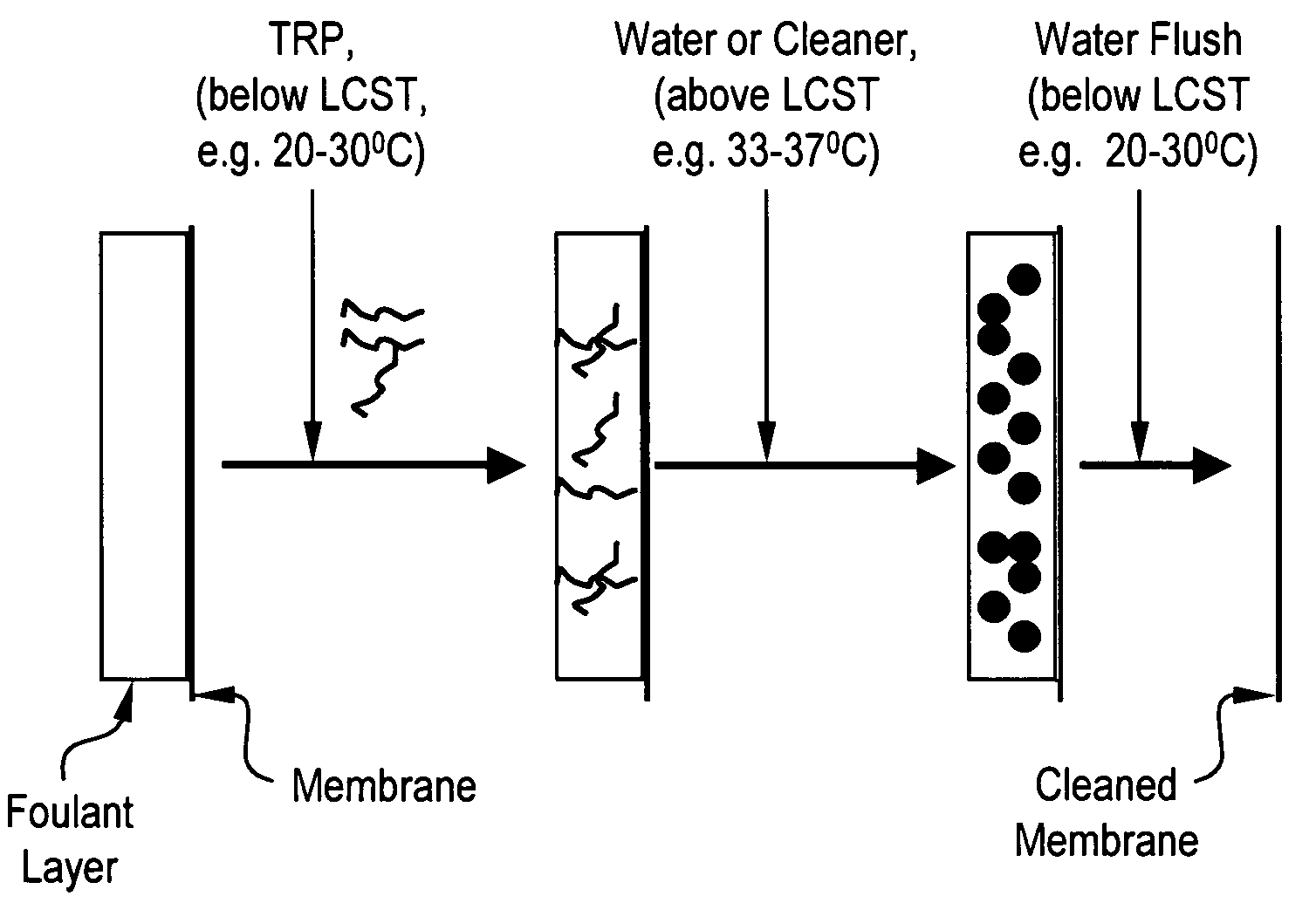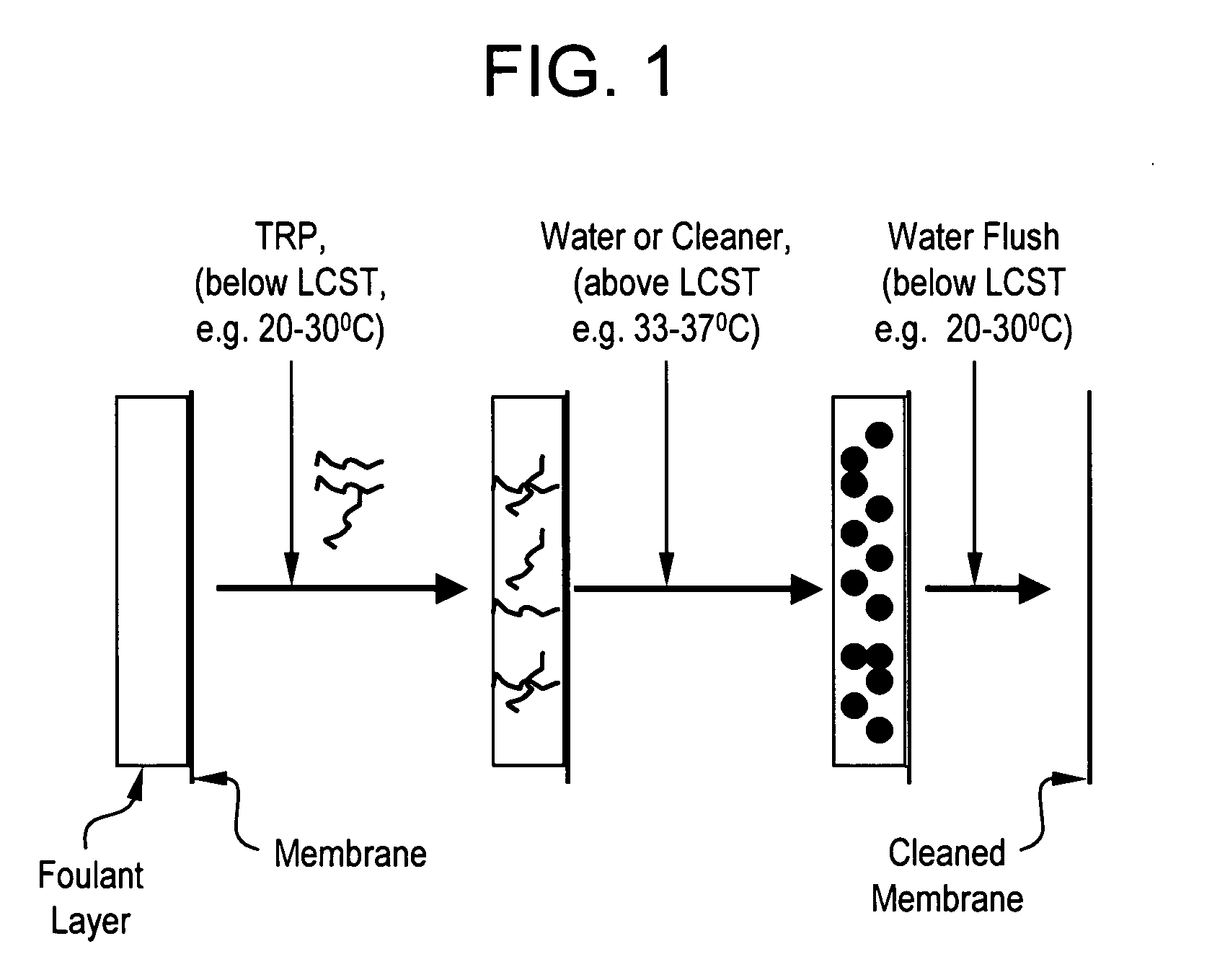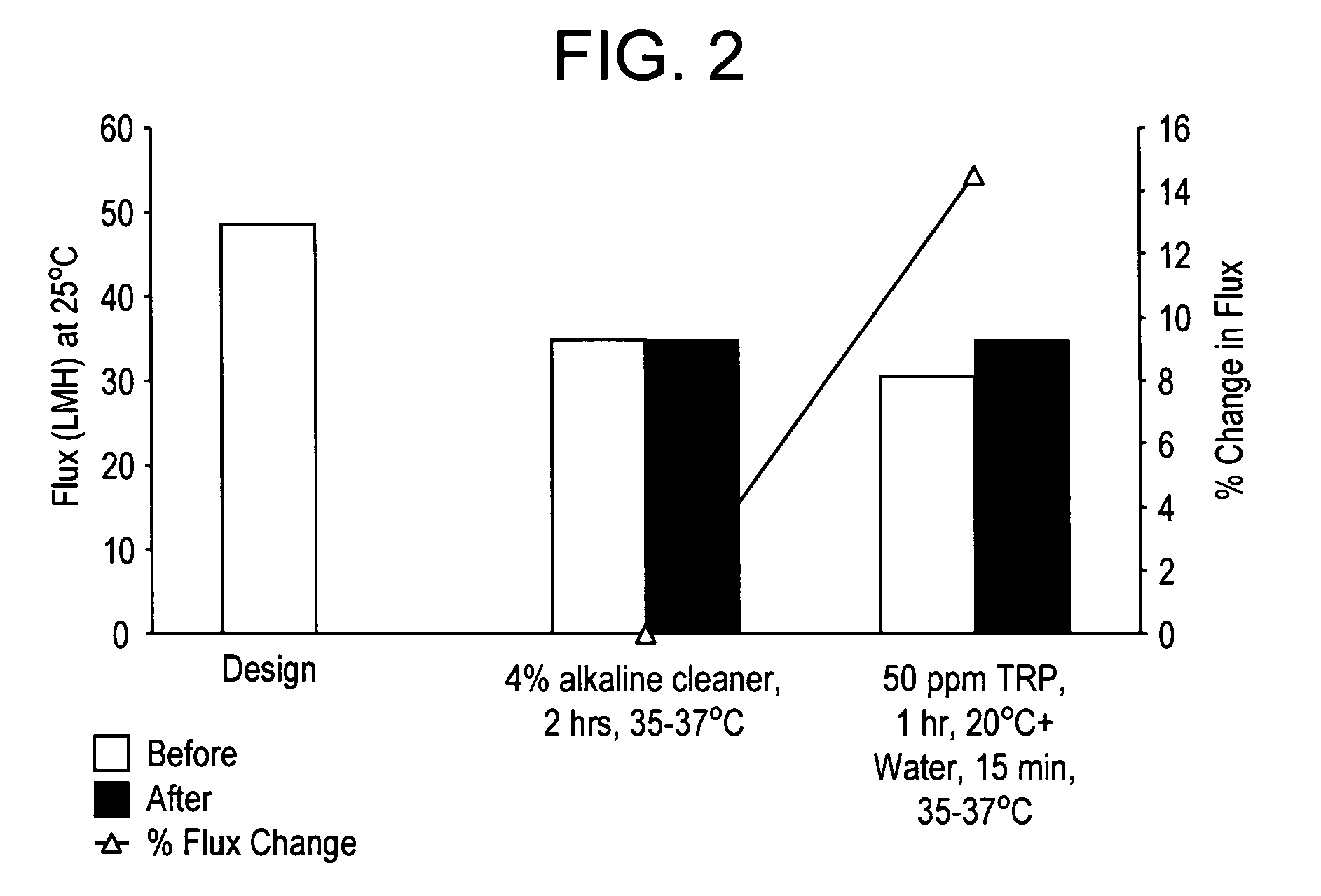Method of cleaning fouled or scaled membranes
a reverse osmosis and membrane cleaning technology, applied in the direction of filtration separation, hollow article cleaning, separation processes, etc., can solve the problems of accelerating the rate, prone to fouling in membrane separation processes, and particularly detrimental to membrane separation systems
- Summary
- Abstract
- Description
- Claims
- Application Information
AI Technical Summary
Benefits of technology
Problems solved by technology
Method used
Image
Examples
example 1
[0087]A spiral wound polyamide reverse osmosis membrane element that was mainly bio-fouled in a water treatment application, was cut open to obtain a test coupon (0.0138 m2 area). The cleaning performance was determined with the following test sequence. Test conditions for measurement of NaCl solution flux (permeate flow per unit time per unit membrane area) before and after cleaning were: 150 psi feed pressure, 1 Lit / min cross-flow rate, 2000 ppm NaCl in deionized water and 25° C. NaCl rejection was determined from feed and permeate conductivity measurements. TRP was poly(N-isopropyl acrylamide). Permeate flow was measured by a flow meter. A bucket and stopwatch could also be used.
Step1Baseline performance with 2000 ppm NaCl solution for 4 hrs to getflux and rejection value with fouled membrane before cleaning2Alternate circulation (10 min, 1 Lit / min cross-flow rate) andsoaking (10 min) of TRP solution in DI water for 1 hr at 20° C.and 25–35 psi feed pressure3Alternate circulation ...
example 2
[0091]The protocol for Example 2 is the same as that of Example 1, except in this example, 100 ppm TRP was used instead of 50 ppm and instead of water, 4% warm (above LCST) alkaline cleaner was used after TRP solution treatment. The results are shown in FIG. 4. In this example, higher TRP dosage and alkaline cleaner resulted in about 29% increase in flux compared to no change with alkaline cleaner alone. FIG. 5 shows that salt rejection increased to 97.2% with 100 ppm TRP followed by warm (above LCST) alkaline cleaner.
PUM
| Property | Measurement | Unit |
|---|---|---|
| molecular weight | aaaaa | aaaaa |
| temperature | aaaaa | aaaaa |
| temperature | aaaaa | aaaaa |
Abstract
Description
Claims
Application Information
 Login to View More
Login to View More - R&D
- Intellectual Property
- Life Sciences
- Materials
- Tech Scout
- Unparalleled Data Quality
- Higher Quality Content
- 60% Fewer Hallucinations
Browse by: Latest US Patents, China's latest patents, Technical Efficacy Thesaurus, Application Domain, Technology Topic, Popular Technical Reports.
© 2025 PatSnap. All rights reserved.Legal|Privacy policy|Modern Slavery Act Transparency Statement|Sitemap|About US| Contact US: help@patsnap.com



